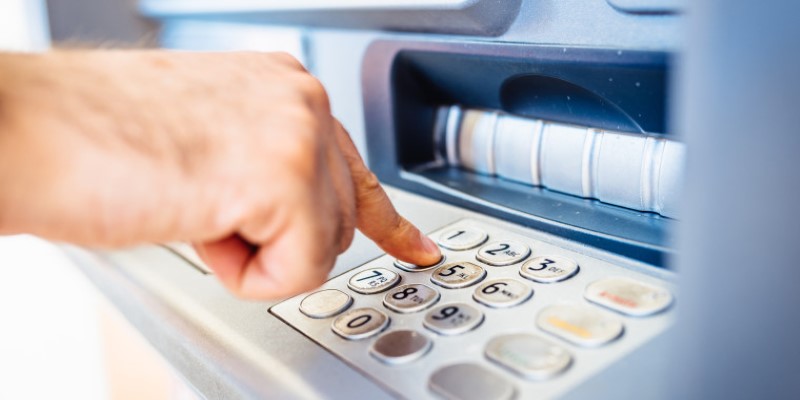Ever feel like your money disappears faster than you earn it? You’re not alone. Many people struggle with unnecessary spending, often without even realizing it. But here’s the good news—you can cut back without sacrificing your quality of life.
You'll be surprised at how much you can save by ditching a few everyday purchases. Ready to take control of your finances? Consider what you should stop buying to keep more cash in your pocket.
1. Bottled Water
Yes, it’s convenient. But have you ever calculated how much you spend on bottled water each year? It adds up fast.
Why It’s a Waste:
• Tap water is often just as safe (if not safer) than bottled water.
• Many plastic bottles end up in landfills, harming the environment.
• The cost per gallon of bottled water is significantly higher than tap water.
What to Do Instead: Invest in a reusable water bottle and a good-quality water filter. You’ll save money and reduce plastic waste.
2. Name-Brand Household Cleaners
Walk into any store and see shelves full of fancy cleaning products. The truth is that many of them contain the same ingredients as cheaper alternatives.
Why It’s a Waste:
• Generic or store-brand cleaners work just as well.
• You can make your cleaning solutions with vinegar, baking soda, and lemon juice for a fraction of the cost.
What to Do Instead: Try DIY cleaning solutions or choose budget-friendly brands. You'll cut costs without sacrificing cleanliness.
3. Expensive Coffee Shop Drinks

We get it—coffee is life. But spending $5 or more on a single drink adds up quickly.
Why It’s a Waste:
• A daily coffee shop habit could cost you over $1,000 a year.
• Home-brewed coffee is just as good; you can customize it to your taste.
What to Do Instead: Invest in a quality coffee maker or French press. Buy your favourite coffee beans and learn to make your go-to drink at home.
4. Subscription Services You Rarely Use
Streaming services, gym memberships, and monthly subscription boxes can all drain your wallet if you don't use them regularly.
Why It’s a Waste:
• Many people forget about their subscriptions but continue paying.
• Multiple streaming services often overlap in content.
• Gym memberships are useless if you don't go.
What to Do Instead: Audit your subscriptions and cancel anything you don't use often. If you need a streaming service, consider sharing an account with family or friends.
5. Fast Fashion
Trendy clothes are tempting, but the constant need to update your wardrobe gets expensive fast.
Why It’s a Waste:
• Fast fashion items often fall apart after a few washes.
• Buying cheaper clothes frequently can cost more in the long run than investing in quality pieces.
What to Do Instead: Buy fewer, longer-lasting items. Thrift stores and second-hand apps can also help you save big.
6. Pre-Cut Fruits and Vegetables
Yes, pre-cut produce is convenient, but you’re paying a premium for something you can do yourself in a few minutes.
Why It’s a Waste:
• Pre-cut fruits and veggies cost significantly more than whole ones.
• They spoil faster due to exposure to air.
What to Do Instead: Buy whole produce and take a few extra minutes to chop it yourself. Your wallet (and freshness) will thank you.
7. Extended Warranties
Salespeople love to push extended warranties, making you think you need them. But most of the time, they’re unnecessary.
Why It’s a Waste:
• Many products already come with a manufacturer’s warranty.
• The cost of repairs is often lower than the warranty itself.
What to Do Instead: Check the manufacturer's warranty first. If extra coverage is needed, consider using a credit card offering purchase protection.
8. ATM Fees

Paying to access your own money? That’s just throwing cash away.
Why It’s a Waste:
• ATM fees can be as high as $5 per transaction.
• Frequent withdrawals add up over time.
What to Do Instead: Use fee-free ATMs, get cashback at stores, or switch to a bank with no ATM fees.
9. Single-Use Items
Paper plates, plastic cutlery, and disposable razors seem small, but they eat away at your budget over time.
Why It’s a Waste:
• Single-use products need constant repurchasing.
• Many disposable items have reusable alternatives.
What to Do Instead: Invest in reusable items like a safety razor, cloth napkins, and glass food containers. They last longer and save you money.
10. Impulse Buys at Checkout
Stores strategically place small, tempting items near the checkout line for a reason. These last-minute grabs can add up fast.
Why It’s a Waste:
• Most impulse purchases aren't things you need.
• The cost adds up over time without you noticing.
What to Do Instead: Make a shopping list and stick to it. Avoid browsing near checkout counters.
11. Greeting Cards
$5 for a piece of folded paper? You can do better.
Why It’s a Waste:
• Greeting cards are overpriced and often thrown away.
• You can create something more personal and meaningful.
What to Do Instead: Make your card, write a heartfelt note, or send a digital message. Handmade cards are more thoughtful and cost less.
12. Cable TV
With so many streaming options available, traditional cable is often unnecessary.
Why It’s a Waste:
• Cable packages are expensive and filled with channels you don’t watch.
• Streaming services offer more flexibility for less money.
What to Do Instead: Cut the cord and switch to streaming platforms that match your viewing habits.
13. High-End Beauty Products
Luxury beauty brands charge a premium, but are they better than drugstore options? Not always.
Why It’s a Waste:
• Many drugstore brands use the same ingredients as high-end products.
• You’re often paying for the brand name, not superior quality.
What to Do Instead: Look for affordable alternatives with similar ingredients. Read reviews and compare before splurging.
Conclusion
Saving money isn't about depriving yourself but making more intelligent choices. By cutting out these unnecessary purchases, you can build better financial habits and have more money for the things that truly matter.
Ready to start saving? Review your spending habits and see where you can make changes today.


